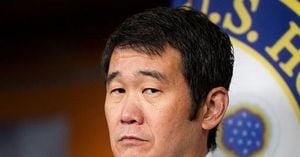Governments across the globe are gearing up for what could be a pivotal moment for the carbon markets during the upcoming COP29 climate summit slated for November 11-22, 2024, in Azerbaijan. The United Nations aims to roll out new standards aimed at restoring credibility within the troubled sector of carbon trading, which has faced numerous scandals and allegations of fraud.
Carbon credits have long been regarded as the currency for environmental responsibility; they represent one metric tonne of CO2 emissions avoided or removed from the atmosphere. These credits are usually generated through various emission-reduction activities, such as tree planting or switching from fossil fuels to renewable energy sources. Yet, the lack of regulation has led buyers to navigate murky waters often filled with scams and ineffective projects, casting doubt on the integrity of carbon credits.
The timing of this initiative couldn’t be more urgent. With climate negotiations dating back to the 2015 Paris Agreement, many stakeholders believe COP29 may finally deliver actionable standards and verification systems necessary for enhancing the validity of carbon credits. "Most countries don't want it to be delayed any longer," commented Jonathan Crook, Carbon Market Watch’s expert. His remarks highlight the significant pressure on international bodies to provide clarity and establish frameworks for trading carbon credits.
This desire for regulation arises from previous failures to create binding standards. The last attempt, known as Article Six, was deemed too lenient and was rejected during discussions held at the COP28 summit last year. Observers are optimistic about the current proposals, noting they are more rigorous and focused on protecting local communities. New rules would empower these communities to challenge any carbon credit-generative activities affecting their lands, establishing checks and balances on what projects are approved.
One proposed enhancement is the introduction of guidelines to certify carbon credit projects. The focus will be on ensuring additional efforts to either avoid CO2 emissions or provide lasting solutions for carbon removal, such as maintaining forests threatened with deforestation. The emphasis on monitoring standards, which would require verification of project efficacy, aims to combat potential fraud and restore confidence. This could include documentation showing trees have been planted and ensuring potential threats like forest fires are accounted for.
Coupled with stricter rules, the UN is also contemplating the establishment of a mutual insurance-like fund where credits from each project would contribute to covering losses if carbon is not stored as promised. If implemented, these new standards could not only create additional revenue streams for developing nations but also offer much-needed credibility to the entire carbon market, which remains under scrutiny.
The interest surrounding the voluntary carbon market is palpable, with discussions on how these standards might serve as the benchmark for quality across the board. Experts like Karolien Casaer-Diez of South Pole believe these proposed regulations could generate significant alignment with other certification bodies like Verra and Gold Standard, improving the market’s reliability.
Today's financial stakes are significant. The collapse of numerous projects due to lack of authenticity led many corporations, initially eager to tout carbon neutrality, to sever ties with unregulated carbon credits. Consequently, businesses now view the establishment of reliable standards as imperative to their strategies and reputations. “We do expect this will evolve to become the new benchmark for quality across the whole carbon market,” said Casaer-Diez.
Still, skepticism lingers. Crucial phrases and definitions within these proposals may be ambiguous and open to interpretation, especially concerning the long-term CO2 emissions estimates involved. Previous attempts have shown the difficulties inherent in measuring such factors accurately, and as Crook stated, "We know the world isn’t perfect; accurate risk assessments can be complicated or unfeasible for many project types.”
Further, discussions around carbon removal are becoming increasingly relevant as global temperatures continue to rise. The need for governments and corporations to find cost-effective means of decreasing their carbon footprints has never been more urgent. Carbon removal methods, which range from natural processes like reforestation to high-tech solutions like direct air capture, face challenges of high costs and limited availability.
Indeed, reports indicate the price for durable carbon removal is roughly 100 times greater than current carbon credits focused merely on preventing future emissions. This discrepancy raises tough questions about resource allocation, particularly as the global conversation around equity and access to these technologies intensifies. A prioritization of carbon removal solutions is not just about theory but hinges on practical steps to make these options accessible to all nations, including those with fewer resources.
THE solution? A carbon removal budget. Financial experts advocate for this concept to establish how much carbon can be safely emitted before hitting dangerous temperature thresholds. Such budgeting would enable nations and companies to value their emissions and removals accordingly, helping guide effective resource allocation and investment decisions.
By instituting clear guidelines on carbon budgets and allowing for informed choices on emissions trading and carbon removal financing, countries can navigate toward their net-zero ambitions much more efficiently. For wealthier nations and corporations, it may mean assessing their reliance on carbon offsets at the expense of necessary emissions reductions.
All signs point toward COP29 becoming the proving ground for these ambitious ideas. There is hope for finally biting the bullet on comprehensive carbon market regulations and ensuring credibility. If these proposed standards get the green light, it could restore faith and promote meaningful investments, providing sustainability and accountability across global efforts to tackle climate change.



